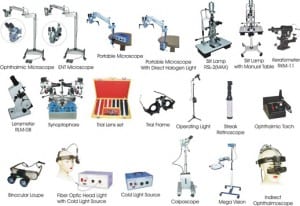
150 years back, Von Helmholtz was the 1st to discover ophthalmoscope and it is expected that during the anniversary, antique ophthalmic equipment and book collection will be gathered at Royal College in London. Eye conditions were quite difficult to treat in the early days owing to the unavailability of proper equipments. However, the invention of ophthalmoscope in 1851 brought a relief to people suffering from different eye disorders. Famous men like Edward Jaeger, A Von Graefe and William Bowman began to come up with different explanations on different eye conditions. The Oxford room contains an early ophthalmoscope model developed by Helmholtz along with a published explanation.
The early ophthalmic equipment needed some light source in order to focus the light to examine the fundus properly. Helmholtz was the 1st to use flickering candle for the purpose of illumination. Incandescent bulb was put to use by Henry Juler way back in 1885. The ophthalmic equipment pioneers used different mirrors that ranged from plano glass to concave steel. Plated glass made concave mirror was introduced for the 1st time by Adolf Coccius. Various instruments will be displayed at the exhibition where a few would consist of varying magnitudes for focal lengths.
Changes to mirror were 1st brought about by John Couper as he tried to angle the mirror to a specific extent. The idea by John Couper led to fundus observation in perpendicular position by avoiding all types of distortion. Couper ophthalmic equipment can be found at the exhibition and definitely a highly anticipated item. Loring introduced rectangular mirror with the vertical sides of the mirror cut off. Loring’s idea finds a place among the recent instruments developed for observation of the eye.
Initially a lot of problem was faced regarding interchanging of mirrors with various focal lengths. But it was Lindsay Johnson who solved this problem by developing ophthalmic equipment with 2 mounted mirrors. Couper and de Wecker made use of ophthalmoscope for the purpose of refraction. If a person is of the opinion that only ophthalmoscopes are offered at the exhibition then it would be absolutely wrong. Trial lens developed by Paetz and Flohr that were found in the attic of a German hospital definitely will grab the attention. 19th century surgical instruments will be kept at the exhibition. Instruments like cataract knives, keratomes will be present along with the very first contact lenses invented by the famous, Otto Wichterle.
